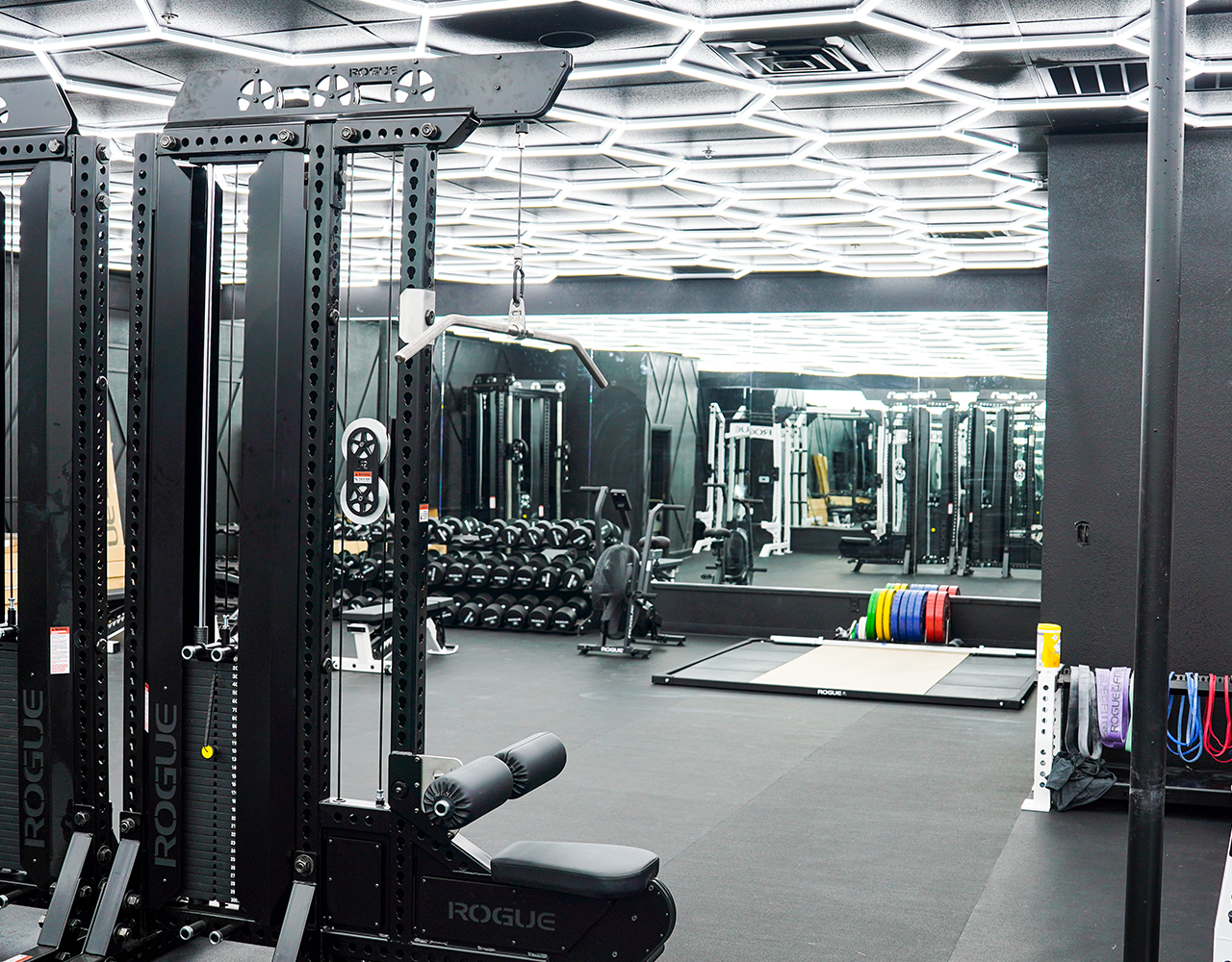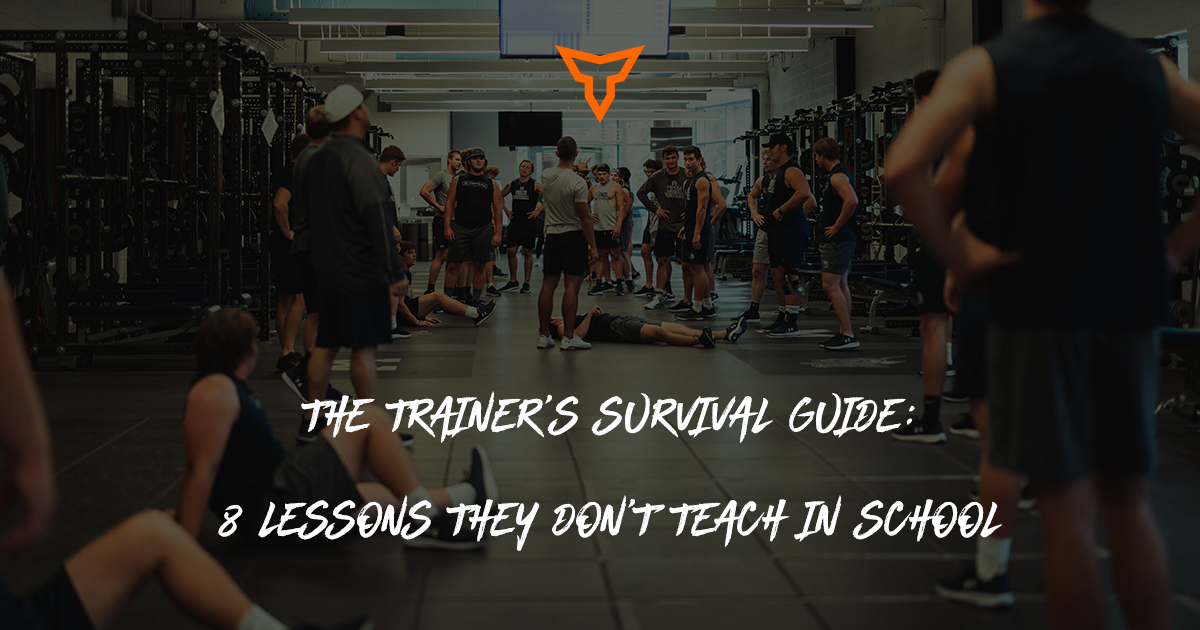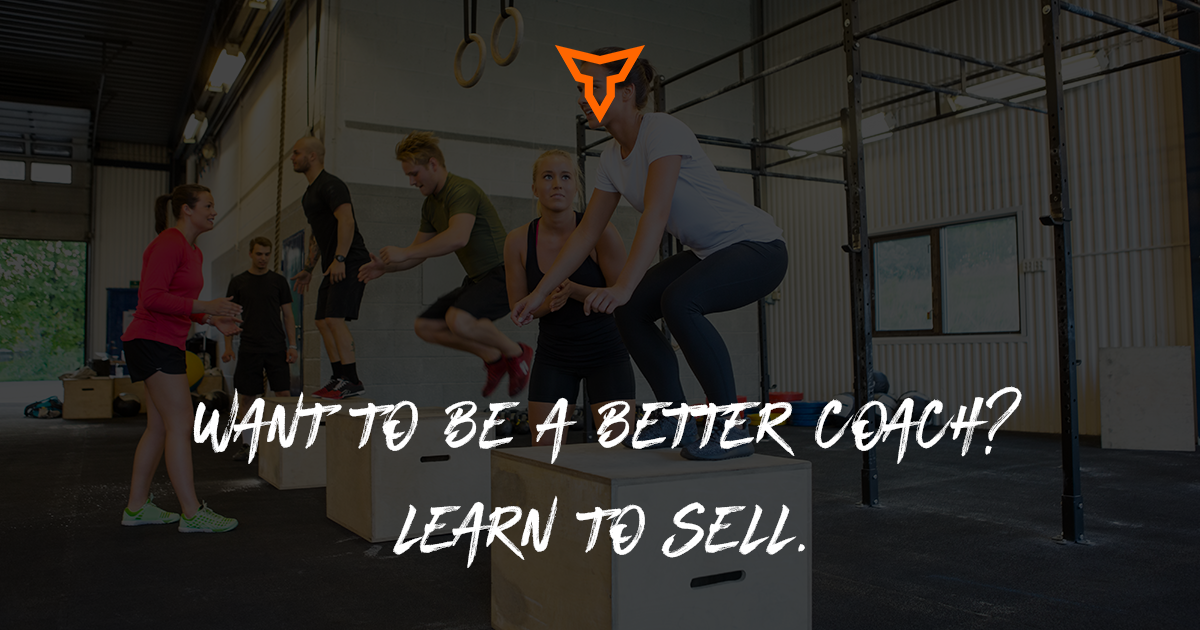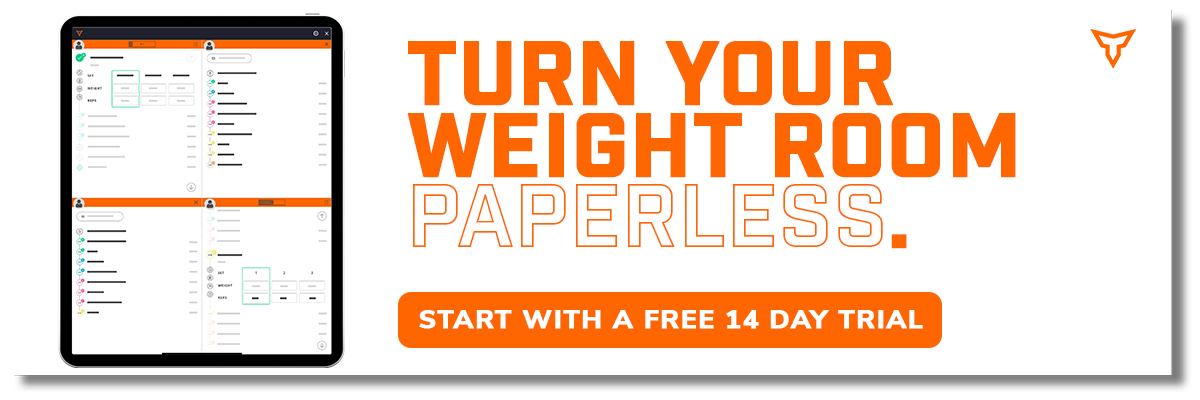5 Mistakes I Made Opening and Operating My First Gym
2020 was a whirlwind for everyone, and, in typical me fashion, I dove headfirst into the chaos. At the onset of the pandemic, I walked away from my role as a Division 1 coach in search of something bigger. That led me to launching Edge Leadership Academy and entering the world of leadership consulting. After a thorough education from YouTube University on the finer points of running a business, I was running full steam ahead as a budding entrepreneur (if you can call one guy operating from his bedroom that). My first rule of business? Say yes to every meeting offered, no matter how big or how small. I followed this rule religiously, and put a lot of miles on my truck, and even more hours on my laptop. 6 long months later, I found myself with a business that generated enough income to keep the lights on and was growing steadily. I was making my own schedule, beginning to see more money each month than I did in months as a collegiate coach, and I was ready to expand my empire. Following my golden rule, I took a meeting with a local entrepreneur that led to another meeting that led to a series of meetings and next thing I knew I was entering into a partnership in the reopening of a performance facility near my hometown….because who wouldn’t want to take a crack at opening their first gym during the peak of a global pandemic?
To say I was optimistic is an understatement. I was partnering with a close friend who owned and operated 2 other successful locations, and I was primed and ready to plant my flag as a partner in what I thought would be the new Mecca of sport performance. He would run the business side, and I would handle all the staffing, programming, coaching, and day to day operations. After months of negotiations, planning, and renovations, I got the keys to the 22,000 square foot facility in January of 2021; a few months ahead of our grand opening scheduled for April. Sounds like a movie, right? Well, buckle up, because this one has more plot twists than the last season of Yellowstone starting with my business partners departure a few months into business. In the following paragraphs, I’ll lay out the biggest lessons I learned the hard way when it comes to owning, operating, and ultimately, leaving a fitness facility in under a year.
Lesson 1: What Got You Crowned Will Get You Killed
“Passion doesn’t pay the bills.” We’ve all heard this line as strength coaches, and unfortunately for us, it couldn’t be more true. When we sat down to develop our marketing plan, I had only one objective; fill the gym with athletes. Coming from the college world, I was very confident in my ability to train and recruit athletes. We would have a youth group, a high school group, a college group, and of course, a professional athlete group. Because why wouldn’t everyone train with the newest gym in town? Despite my business partner’s advice to focus primarily on personal training and adult fitness classes to build a base, I went full-steam ahead with marketing to athletes. This was reflected in our branding, our messaging, and in the outside perception of our facility. This was a mistake that proved to be costly. Not only was I unintentionally poaching athletes from other gyms which burned bridges, I was also alienating adult clientele with the perceived atmosphere of our gym. It turns out John the car salesman doesn’t love working out to the newest Drake album…who would’ve guessed?
I just wanted to coach athletes. I did little to no personal training, and I sure as hell didn’t want to run numbers and sit in front of excel sheets. I wanted our facility to be accessible to anyone and everyone, I just didn’t want to train them myself. This meant I worked with people on pricing, wheeled and dealed packages, and ultimately crushed our profit margin. Now, did having people walk in and see a full gym bring more people in the door? Sure. But, it wasn’t attracting the type of clients we wanted. If client A can’t afford a premium service, odds are their social circle is in the same socioeconomic bracket. So now, I have 2 clients both getting discounted rates and telling all their friends. If you’re in the quantity business and have low enough overhead costs to pad your margins, this may work, but for us it was a major roadblock and had us chasing breakeven every month. I would have seen this problem coming if I broke myself out of the tunnel vision I was caught in, but I had ignored all my business IQ as soon as I started coaching. Why? Because it was what I knew. What got you crowned will get you killed.
Lesson 2: Tools vs. Jewels
Man, we had it all. I’m not exaggerating when I say we had 22,000 square feet of a strength coach’s dream. Aside from the main performance floor outfitted with the normal racks and dumbbells, we had Keiser machines, Vertimax equipment, 2 turf fields including 3 full size batting cages, Echo bikes, rowers, a full-size boxing ring and 20 heavy bag stations, a spin bike area complete with 20 bikes, and all the bells and whistles that go with it. I was spoiled, but I was also inefficient. When we were laying out the facility, I lost track of a key variable; flow. As soon as we had our first busy day, I realized my mistake. Too late. We had groups of athletes competing with general population clients for space in the main gym, the dumbbells were too close to the turf causing log jams and safety concerns, and we didn’t have enough benches to support a full class and a full gym. Talk about feeling stupid. This was fixed by having our staff walk through each session before it started so we could see how the room would flow. After a few minor adjustments and some bumping of equipment, we had a much more efficient layout. My mentor, Todd Hamer, always said “program the room” and I will never forget that again.
After the session, I took my bruised ego and met with my staff. My instructions were simple; if it’s not necessary to your program, cut it. Make a list of the equipment that gets used the most and used the least. Find alternatives and creative solutions to use the equipment we have excess of more and use the specialty equipment as little as possible. Within a few short weeks, all that nice shiny equipment we were so eager to talk about during open houses and photo shoots was sitting collecting dust. At the end of the day, we all know what we need to get great results; a barbell, some dumbbells, a little space, and a great environment. That’s what we would focus on, and that’s what would keep us in business. We learned a valuable lesson here that I think a lot of coaches would benefit from hearing; Are they tools or jewels? Before you purchase that new piece of equipment ask yourself a few questions.
- Can I use it with 80% of my clients?
- Do I have enough of them to facilitate my average group size? What about your busiest day?
- If I didn’t have it, how would I achieve the same result?
- Do I need it or do I want it?
Lesson 3: People, People, People
After a lackluster performance in the first 2 months of business, I had a realization that allowed us to course correct and start generating real profit. After the initial scheduling debacle, we had tried to keep our athlete groups and general population groups separate. This was a mistake on my part. I took notice how each group seemed to have people who just brightened the gym. People were smiling, laughing, and working hard. These people would be my “drivers.” I made note of who was the source of energy in each group and worked to build a culture around them. We had a core group of college athletes who were great people. They loved to train, and they had fun while they did it. I changed their training times so more of our high school parents would see them interacting with their children during drop off times for their kids. Boom, we instantly had more parents bringing their children to train. We also had a state police officer who trained with us and had a similar effect on the people around him. I scheduled him at busier times when his schedule allowed and the results were similar to the athlete group. The lesson here? Identify people in your gym who embody what you want your culture to be. Next, take those people and build a culture around them. I did this by trying to make sure there was always one of our “drivers” in the gym during business hours. Your clients are your best sales people, and properly utilizing them will benefit you in the end.
Lesson 4: Can Doesn’t Equal Should
Looking back, our business motto should have been “drowning in opportunity” because that’s exactly what we did. With such a large space, the opportunities were endless. We had personal training, group training, adult fitness classes, youth and adult boxing classes, spin, camps and clinics, field rentals, batting cage rentals, and the list goes on. Sounds great right? Until you factor in the logistics needed to properly schedule, manage, and implement all these moving parts. We had a phenomenal staff (most of whom is still running the facility today), and we would have crashed and burned if it wasn’t for them. Initially, we tried to silo each area of the gym into its own bucket. Our adult fitness coach would handle all the classes, our boxing instructor would handle the boxing area, our operations person would handle field and cage rentals, and I would handle the main gym. This idea worked great until it didn’t. We all worked different schedules, and communication quickly broke down. Scheduling issues occurred, pricing was variable depending on who took the phone call, and ultimately we found ourselves spinning in circles trying to keep everything straight with a series of texts, post-it notes, and chain e-mails.
Instead of cutting back and streamlining opportunities, we tried to triage the cash flow issues by adding more classes or new programs. We were doing everything, but doing only a few things well. We had too many hands in the cookie jar and this was 100% my fault. I wanted to have a team leadership approach and allow each person to run their department how they saw fit, but I failed to centralize the mission and priorities. What should we have done? We should have streamlined our communications, identified our highest performing programs/classes, and cut the excess. The lesson here is simple; just because you can, doesn’t mean you should.
Lesson 5: Know When to Fold Them
By the end of summer, classes were filling up, profits were steadily increasing, and opportunities were popping up to do on-site training with local high schools and law enforcement. Everything was on track, and it seemed like I had weathered the storm. So why did I walk away? I loved training people, I loved my clients, and I loved our staff. I didn’t love running a performance center. I’m not saying you have to love all aspects of your business to be successful, but if you can’t find some semblance of joy in doing the tasks it takes to make the business run, it will run you…straight into the ground. The more opportunities we had and the more revenue we generated, the more time I was spending at the gym. If I wasn’t out drumming up new business, I was staring at excel sheets, scheduling, or doing other non-coaching tasks. I didn’t have a business; I had a job.
Given that I already had another business which required my attention, I was left with zero free time and my relationships and bank account suffered because of the gym. This meant I had a decision to make. We were making money, but I was barely paying myself, and I definitely couldn’t afford to hire the staff it would take to remove myself from the day to day. Ultimately, I decided to walk away. Before I did, I asked myself a series of questions that I urge any business owner to ask before selling/closing their operation.
- What would it take to remove myself from the day to day but retain ownership and is it feasible? Financially, time, etc.
- How will walking away affect me financially?
- What will my life look like without this business?
- Did I build something I can be proud of?
- Did I learn lessons that I can take with me to other ventures?
- Can I exit in a way that doesn’t negatively affect the people who have been loyal to me (clients, staff, etc.)?
Opening a performance facility is an exciting opportunity for anyone who is brave enough to take it on. I can honestly say there is not a day that goes by where I don’t think of what I would’ve done differently. It will challenge you to use tools outside your coaching toolbox, grow in your business IQ, and humble yourself indefinitely. I hope this article gave some struggling business owner some hope and reassurance that you are not alone or served as food for thought for someone looking to take the plunge. My final words of advice are simple; you won’t have it all figured out, but if you focus on the people and creating the best possible environment, you’re headed in the right direction.
Subscribe to our blog
Subscribe to receive the latest blog posts to your inbox every week.
Related posts

7 Strategies for Attracting and Converting New Leads

The Trainer's Survival Guide: 8 Lessons They Don't Teach in School


